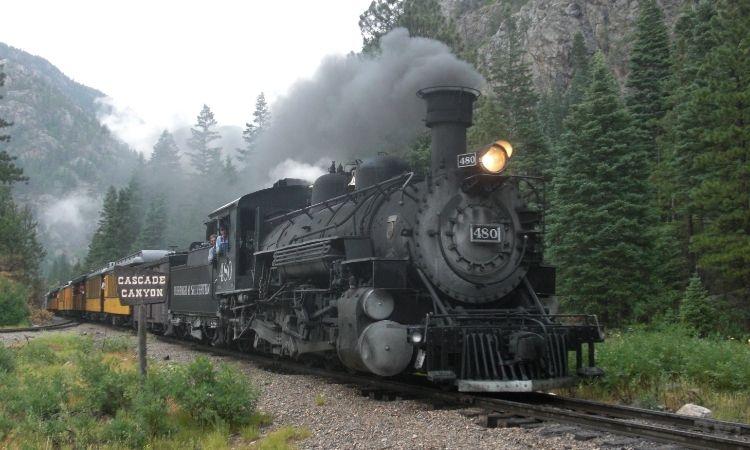The Power of Railroads: Driving Mobility and Connection

Railroads are more than just tracks of steel — they are stories of connection, progress, and transformation. Since their invention, railroads have played a pivotal role in shaping economies, expanding cities, and linking communities across vast distances. Even in today's digital world, where everything moves fast and virtually, the physical movement of people and goods still depends heavily on the efficiency and reliability of rail systems.
From steam-powered locomotives to high-speed bullet trains and autonomous freight systems, railroads have continuously adapted to technological and social change. They form the backbone of sustainable transportation, offering a low-emission alternative to road and air travel. With urban populations growing and logistics needs intensifying, railroads stand as a vital force driving modern connectivity — dependable, energy-efficient, and increasingly intelligent in operation.
Expert Insights: Advancements in Australia Railroads
According to Expert Market Research, Australia Railroads are undergoing rapid innovation as the country invests in sustainable infrastructure and smarter transport systems. Railways in Australia serve as crucial arteries for both urban transit and long-haul freight, especially in mining and agricultural regions. Expert Market Research highlights how Australia is embracing automation, AI-based signaling systems, and green energy integration to modernize its rail networks. These upgrades are not only improving efficiency and safety but also supporting the nation’s environmental goals. The diverse terrain of Australia — from dense cityscapes to expansive outback routes — makes its railroad development a unique and dynamic journey. With cross-state connectivity and international export corridors gaining momentum, Australia is setting a global example of how railroads can be both high-performing and future-ready.
Innovation on Track: From Steam Engines to Smart Trains
The railroad industry has always been a frontier of innovation. What began as coal-fueled machines pulling wooden carriages has evolved into sleek, aerodynamic trains powered by electricity and controlled by artificial intelligence. Today’s trains run faster, quieter, and more efficiently than ever before. High-speed trains can now connect cities in a matter of hours, and magnetic levitation (Maglev) systems are pushing the boundaries of speed and smoothness.
Rail freight is also undergoing a revolution. Automated cargo handling, predictive maintenance through sensors, and digital twin simulations are making operations smarter and more responsive. Whether it's moving grains across rural regions or delivering electronics to tech hubs, freight railroads are the silent workhorses behind global trade. These advances don’t just improve performance — they reduce emissions, cut delays, and increase reliability across the board.
Railroads and Urban Renaissance
In urban environments, rail systems are reshaping how people commute and live. Subways, light rails, and commuter trains are relieving road congestion, cutting travel times, and making cities more livable. Rail transit offers a stable, time-efficient alternative to cars, especially in densely populated regions where traffic and pollution are growing concerns.
Cities across the globe are investing in mass transit not just for practicality, but for sustainability. With increasing awareness about climate change, rail-based public transportation is becoming central to eco-friendly urban planning. These systems reduce dependence on fossil fuels and encourage compact, walkable cities. Railroads, in this context, aren’t just about transportation — they’re about transformation.
Cultural and Economic Connectors
Railroads have long been tied to the cultural and economic fabric of societies. They’ve inspired literature, fueled industrial revolutions, and stitched together distant communities. In developing nations, a single railway can bring education, healthcare, and commerce to previously isolated areas.
Tourism has also benefited immensely from railroads. Scenic train routes offer travelers unique experiences, showcasing landscapes inaccessible by other means. Luxury trains and heritage railways preserve history while providing high-end leisure journeys. Whether it’s the Trans-Siberian Railway, the Rocky Mountaineer, or Japan’s Shinkansen, trains carry not just passengers — they carry stories, memories, and milestones.
The Sustainability Edge: Railroads and the Environment
One of the most compelling reasons for the continued relevance of railroads is their environmental benefit. Compared to trucks and airplanes, trains produce far fewer carbon emissions per ton-mile of freight or per passenger mile traveled. Electrified rail systems and hybrid locomotives further amplify this advantage, offering cleaner, greener solutions for both passenger and cargo movement.
Incorporating renewable energy sources such as solar and wind into rail operations is another emerging trend. Some countries are even experimenting with hydrogen-powered trains, pushing the industry closer to carbon neutrality. As climate goals become more urgent, railroads are poised to be among the leading solutions for sustainable transport infrastructure.
Full Speed Ahead: What the Future Holds
Looking ahead, the future of railroads is nothing short of exciting. As urbanization grows and logistics networks become more complex, railroads will continue to evolve to meet these demands. Smart infrastructure, enhanced data analytics, and integration with other transport modes will make railways more agile and interconnected.
Railroads are no longer just tracks laid across the earth — they’re pathways into a smarter, more sustainable future. By blending tradition with innovation, and speed with responsibility, the global railroad system is set to remain one of humanity’s most vital assets for decades to come.
¡Por favor activa el Javascript![ ? ]



